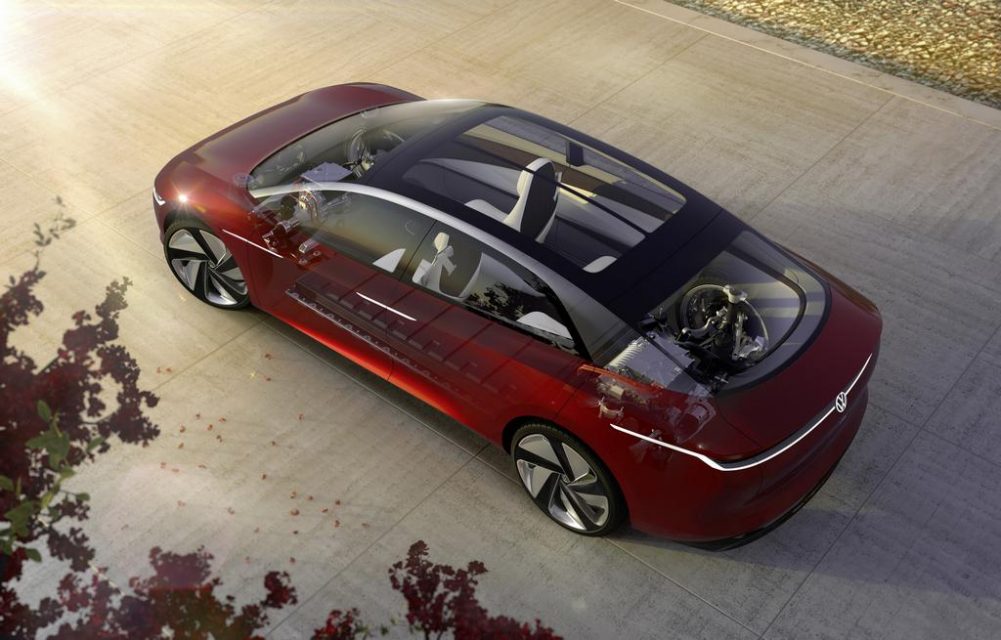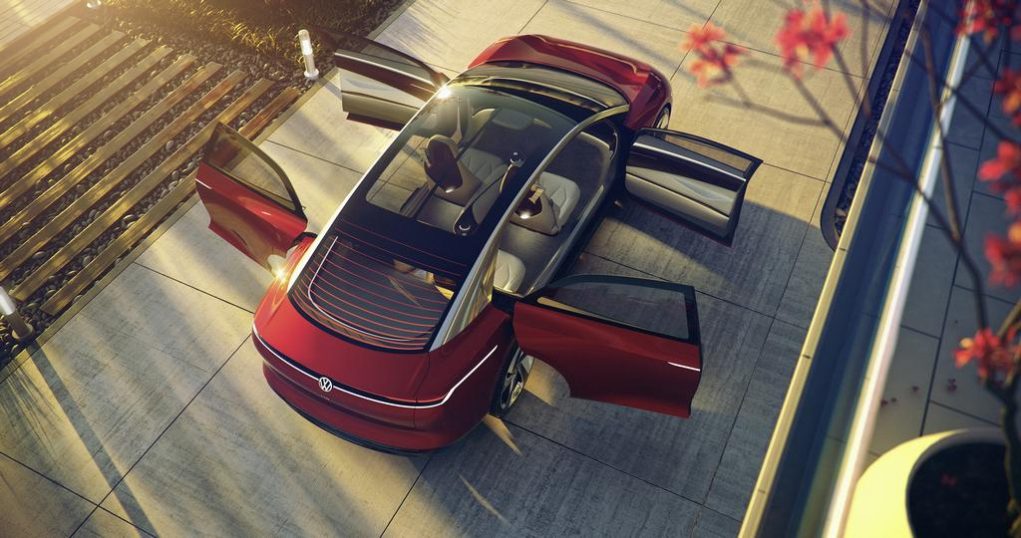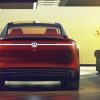
Volkswagen ID Vizzion Concept previews a premium sedan with electric powertrain adaptation and it could directly rival Tesla Model S
Of late, every international motor show passes by with Volkswagen showcasing a brand new electric concept signifying the important steps taken towards at the future. At the first press day of the 2018 Geneva Motor Show, VW has unveiled a brand new design study called ID Vizzion following a number of teaser images.
It is going to be a range-topping sedan replacing the Phaeton with electric powertrain and act as a Tesla Model S rival. The Volkswagen ID Vizzion concept is revealed to have a length of 5.16 metres and is a premium sedan with 1.94 metre width, 1.5 metre tall and has a massive wheelbase of 3.09 metres. It is now part of the expanding ID family that already has Crozz, Buzz and the compact ID.
Also Read: India-Bound Volkswagen Virtus (Next-Gen Vento) Launched In Brazil

It has abundance of LED signatures up front alongside light strips connecting the headlamps. It comes with bold creases in the bumper and fastback styling with a contrasting roof painted in black colour with white surrounds. The big multi-spoke 24-inch alloy wheels accentuate the side profile of the Vizzion concept and bring an aggressive appeal.

On the inside, the premium sedan has a lavish interior as one would expect and the devoid of a steering wheel is apparent from the cockpit. The unusual yet futuristic interior also does not have traditional pedals, buttons and dials. Volkswagen definitely targets Level 5 autonomous driving technology with the production version of this four-seater concept but it might be still long way off.
Also Read: Volkswagen Compact SUV (Creta Rival) Global Debut Later This Year

The all important electric powertrain comprises of two transmissions and a couple of electric motors which are good enough to produce a combined power output of 302 horsepower and the maximum speed is claimed at 180 kmph. The powerful 111 kWh battery pack is said to run up to 664 km on a single charge (in European Cycle) and regenerative braking is taken into account.

The interior is functional only through voice and gesture controls while manual commands can be put in the mix with two rotary controls on the center console to bring the car to a stop when needed. The virtual assistant keeps tab of your surroundings, adjusts temperature and informs you of the arrival times and other necessary data.














